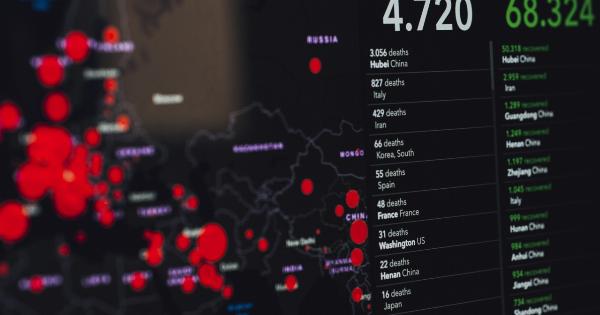The Kronovirus has swept the globe, causing immense human suffering and putting immense strain on healthcare systems.
As scientists and researchers continue to grapple with understanding this novel virus, one aspect that has emerged is the differential impact it has on various age groups. It has become increasingly apparent that older individuals are more susceptible to severe illness and death from the Kronovirus, highlighting a strong link between aging demographics and vulnerability to viral infections.
The Aging Immune System
The human immune system undergoes complex changes with age, collectively termed immunosenescence. These age-related alterations impact the body’s ability to mount an effective immune response against pathogens, including viruses.
One key aspect of immunosenescence is immunological memory decline, resulting in diminished recognition and response to pathogens encountered in the past.
In addition to memory decline, aging also affects various components of the immune system, such as reduced production of immune cells like T cells and natural killer cells, as well as impaired function of antigen-presenting cells.
Furthermore, chronic low-grade inflammation, known as inflammaging, is a hallmark of aging, which contributes to the dysregulation of immune responses and heightened susceptibility to infections.
The Kronovirus and Severity of Illness in the Elderly
Studies and observational data from around the world consistently show that older adults are disproportionately affected by the Kronovirus. The risk of severe illness, hospitalization, and mortality increases dramatically with age.
In fact, the majority of Kronovirus-related deaths occur in individuals aged 65 and above.
There are multiple factors that contribute to the increased risk in older adults. The aging immune system, as discussed earlier, plays a significant role in their vulnerability.
The decline in immune function and reduced ability to mount an effective immune response make older individuals more susceptible to viral infections, including the Kronovirus.
Moreover, older individuals often have comorbidities such as heart disease, diabetes, and respiratory disorders, which further exacerbate the severity of the illness.
These pre-existing conditions, combined with immunosenescence, create a perfect storm for the Kronovirus to wreak havoc in the aging population.
Differences in Response to Vaccination
As vaccination efforts roll out worldwide, it is crucial to consider the efficacy of vaccines in the elderly population. Vaccination against the Kronovirus has shown promising results, reducing the incidence of severe illnesses and deaths.
However, the immune response to vaccines can vary among different age groups.
Several studies have suggested that older adults may exhibit a less robust immune response to vaccination compared to younger individuals. This diminished response might be attributed to immunosenescence and age-related decline in immune function.
Consequently, it becomes critical to explore strategies that can enhance vaccine efficacy and protection in older adults.
Specifically tailoring vaccination protocols for the elderly, such as providing higher vaccine doses or utilizing adjuvants to boost the immune response, may help address the reduced vaccine efficacy in this age group.
Ongoing research and clinical trials are investigating these approaches to optimize vaccination strategies for older individuals.
Addressing Vulnerabilities and Protecting the Aging Population
The disproportionate impact of the Kronovirus on older adults highlights the urgent need to prioritize their protection.
Efforts should be focused on shielding the elderly population from exposure through strict infection control measures, such as social distancing, mask-wearing, and hand hygiene.
Additionally, healthcare systems must proactively address the healthcare needs of older individuals, ensuring accessibility to appropriate medical care and support.
Vaccination campaigns targeting the elderly should be prioritized to optimize protection and minimize the risk of severe illness and death.
Last but not least, the Kronovirus pandemic serves as a reminder of the importance of geriatric and public health preparedness.
Public health infrastructures should be equipped to handle the unique challenges posed by aging demographics during infectious disease outbreaks, including adequate healthcare resources, targeted vaccination strategies, and tailored communication to reach the elderly population.
Conclusion
The Kronovirus has underscored the profound impact of demographics on susceptibility to viral infections. Aging populations face heightened vulnerability due to changes in their immune system and the presence of age-related comorbidities.
Efforts to protect older adults need to be prioritized through targeted vaccination strategies, infection control measures, and strengthened healthcare systems. By addressing these vulnerabilities, we can mitigate the impact of the Kronovirus and protect the most at-risk population.





























